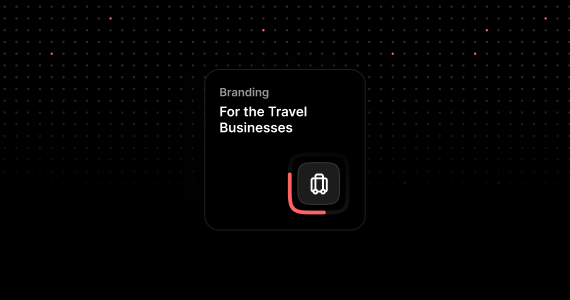Exploring the possibilities: Discovery Phase in software development
Imagine building a project without a solid plan or understanding of its requirements. It’s like going on a trip without a route. That’s where the discovery phase comes in. In this article, we’ll take a closer look at what the discovery phase is, why it matters for different projects, who’s involved, and the crucial steps you need to take. In fact, this is the whole range of processes for determining the needs of the customer and actions on the part of the executing company to satisfy them.
Already in the process of this phase, the contractor company can sell part of the work, identify the true pains of the customer, present itself from the right angle, and prepare resourcefully for the implementation of the entire project.
For the client, the discovery phase can mitigate financial risks due to the termination of cooperation. And when choosing the right contractor, it will allow you to test the success of the implementation of ideas even before investing, and also help you get started more easily.
The importance and profitability of the discovery phase in project development
You might be wondering, which projects is the discovery phase relevant to? Well, it’s important for a variety of projects and is a must for startups. It’s also recommended for innovative projects with flexible requirements to start with the discovery phase before diving into software development. The discovery phase is especially helpful for projects that have unclear or vague functional requirements. Through this phase, you not only gain a better understanding of the overall functions but also get a clearer vision of the end user’s perspective.
Similarly, for projects with uncertain non-functional requirements, the discovery phase can be incredibly beneficial. If you’re unsure about which technology stack to use, the discovery phase can help test different approaches and determine the right one. And if your idea is still unclear, the discovery phase can assist in finding commercial viability by creating prototypes and testing them out.
We would like to show the main value of the discovery phase for your company, namely:
- Project timelines are determined.
- You can see the budget in advance without the risk of an increase.
- Requirements for the final product are formed in advance during the analysis stage of competitors, user experience, and stories.
- Changes during the project are minimized.
Who is taking part?
During the discovery phase, various team members play a vital role. Depending on the available resources, the following roles can be involved:
- Project manager or sales manager (communicates with the client at all stages of project implementation, structures the team’s work, and is responsible for reporting on task completion).
- Business analyst or consultant/expert in a specific field (studies the market, target audience, and client’s business processes, and proposes solutions for business tasks).
- UI/UX specialist (creates the design and interactive prototype of the future project).
- Developers responsible for assessing the technical aspects of product development (determining and proposing tools, platforms, and other technical solutions to be used in project creation).
- Stakeholders and subject matter experts also have a valuable role to play in offering their insights and expertise.
Having the technical and UI/UX specialists involved in the discovery phase is crucial because it ensures that both the technical and user experience aspects are taken into account right from the beginning. This helps in creating a project that not only works smoothly but also delivers a positive user experience.
What actions does it consist of in the discovery phase?
Every step is essential, and in principle, discovery is always modeled differently depending on the product. In large projects, this is already a full-fledged business analysis, in small ones, a mini discovery on competitors. Let’s delve into the discovery phase steps in Solar Digital company for a more detailed understanding.
1. Build a MindMap
- Our initial step involves creating a preliminary project map based on the available data.
- Engage in brainstorming sessions with the client to gather all relevant ideas and project components.
- Carefully select functions and features that require further analysis and consideration.
2. Concept document
- At this stage, our focus is on formalizing the goals and tasks of the project.
- Provide a comprehensive description of the project concept, clearly outlining what is included and what is not allowed.
- We outline the project’s structure and define its basic functionalities.
- To ensure success, we identify high-level project requirements and address any potential risks.
- Establish technological and project scale guidelines, allowing for a smooth implementation.
3.Create a StoryMap
- Building on the previous steps, we compile a list of both technical and user functions.
- Provide approximate forecasts regarding the complexity level of each function.
- Organize the functions into logical stages, creating a roadmap for development.
4. Business process map is all you need
- Here, we focus on listing the business processes that the project and its product will encompass.
- Determine key constraints and requirements to ensure seamless integration.
- This step helps us gain a comprehensive understanding of the project’s scope and objectives.
5. Interface sketches
- To bring the project to life visually, we create sketches of the user interface.
- We specify the essential features and layout for each key page, ensuring a user‑friendly experience.
6. Description of project business processes
- In this phase, we create detailed business process diagrams.
- Describe the various business processes according to individual roles and interaction environments.
- Identify and list the specific functions required by each user.
- Set clear goals and tasks for the CRM implementation, ensuring its effectiveness in meeting business needs.
- Conduct interviews and collaborate closely with the client to validate CRM solutions and contractor work, ensuring optimal results.
7. UX Design
- User experience (UX) is crucial for the success of any project. At this stage, we meticulously analyze user profiles and behavior.
- Create wireframes for multiple pages, paying close attention to usability and intuitive design.
8. Functional requirements
- To ensure a seamless user experience, we provide detailed descriptions and requirements for each function.
- We consider various user scenarios and outline the necessary functionalities to meet user needs and expectations.
9. Non-functional requirements
- In addition to the functional aspects, we also address non-functional requirements.
- These include considerations such as search engine optimization (SEO), performance, scalability, and security.
- List and partially formalize these requirements to ensure the project’s overall success and long-term viability.
How we use the discovery phase in projects
The discovery phase is a crucial step in any project, ensuring a strong foundation for success. Let’s consider two work scenarios:
In the first case, where the flexible methodology allows for an extended process, market research, competitor analysis, feedback, and adjustments are conducted. This approach enables a clearer understanding of the needs of the target audience and quick adaptation.
In the second case, when there are budget constraints that need to be taken into account, the focus is on values and prioritization within the given resources. The team chooses more cost-effective research methods and information gathering techniques. The goal is to focus on the more crucial aspects of the project that will align with the specified budget.
Regardless of the chosen scenario, the discovery phase of website development serves as a compass, testing ideas and providing a clear direction. Our important distinction is that for each project, we tailor our discovery phase to meet expectations (deadlines, budget, priorities, and tasks). And most importantly, we do not exaggerate to increase the price, and we never reduce it to avoid losing important project nuances.
Conclusion
After receiving the information, we can conclude that the discovery phase of an IT project is a crucial step in the project development process. Without it, it’s like setting sail without a destination. The discovery phase is particularly important for complex projects and those introducing something new.
It is clear that thanks to such research, the foundation for the development of a project can be laid, adapted to the needs of customers. The real value of the discovery phase is that it takes us beyond technical specifications and helps start a project from scratch according to all the canons: it identifies possible challenges, strengths, and weaknesses, and also encourages project managers and the development team to be creative.
And speaking in a simple and accessible language, the discovery phase in the project is like your Google map on a journey!



